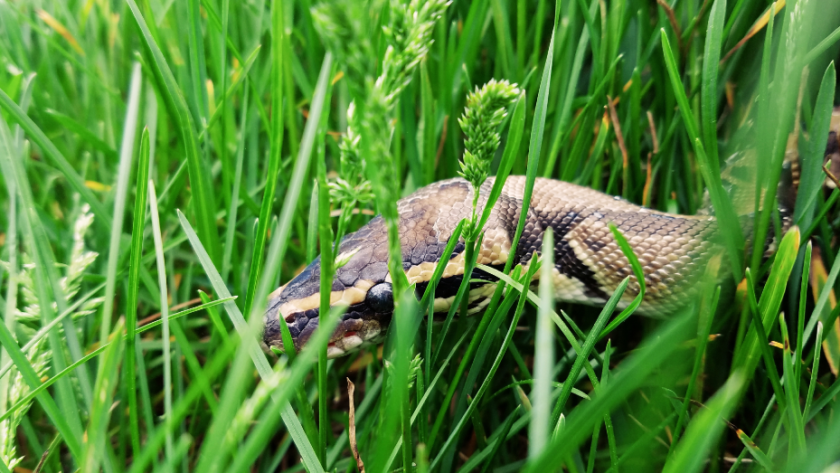In South Florida, the Burmese Python is a problem that is only going to be fixed by science and hunters getting the job done.
In most parts of the world, we would have a sense of shock and revolt to know that a particular species is being hunted down to eventually be eradicated from an area, but this snake is not one that we want to save in this area of the world. You see, the Burmese Python is an invasive species and should have never found its way to the Florida Everglades, but it’s there, and only a couple of solutions can fix the trouble this snake is causing.
What has the Python Done to the Everglades?
The Florida Everglades is an ecosystem that covers about 1.5 million acres in South Florida. We’ve all seen videos of fan boats riding across the waterways of this area, but it’s made up of much more than just the swampy marshlands. Now, a snake that doesn’t belong in this area has taken over and all but eradicated the small mammal population in the area. This is truly a problem, especially considering this snake has no natural predators in the area.
How Did this Snake Arrive in Florida?
The 1970’swere a time of oddities in Miami, one of which was the prolific sale of exotic pets. This was how the Burmese Python arrived in Florida. Pet owners didn’t truly know what they had in these snakes, which can grow to 20 feet or more in length. When some of these pet snakes got too big to keep at home, some irresponsible pet owners released their snakes into the wild, which got things started.
The pet owners that let their snakes go were not the only ones to add these pythons to the area. In 1992, Hurricane Andrew destroyed a python breeding facility, and an unknown number of these snakes were released in the nearby swamps, which led to the Everglades.
It seems that if a few pets and several hundred snakes from a breeding facility are the only ones to be released into the environment, they couldn’t take over. The problem is, female pythons can lay 50-100 eggs at a time, and with no predators to control the number of snakes, this python has taken over the area. Today, authorities have no idea how many of these snakes are roaming the region.
Open Season Begins
The problems these snakes have caused are so severe that the State of Florida is allowing hunters to track down and hunt these snakes without permits or licenses, without limits, and in some cases, they are paying these hunters. These hunters are all working under the umbrella of the South Florida Water Management District’s Python Elimination Program, and they are allowed to hunt down and kill as many of these snakes as they can. Now, the Burmese Python has a predator, but that predator might not be plentiful enough to eradicate the threat to the Florida Everglades.
Hunting Snakes Big Enough to Eat Them
The people who have taken to the rough gravel roads through the Florida Everglades to get a glimpse of the pythons that could bring in a big payday are pretty brave, amazing, and crazy at the same time. These hunters have to be fast, decisive, and ready for anything. Some of these snakes have measured more than 15 feet in length and have been known to swallow large mammals, such as deer, whole, which means they could easily swallow a person as well.
Many of the hunters in the Everglades have rigged up their own way of tracking down these snakes, bagging them, and killing them to be studied and paid. These snakes are not venomous, but that doesn’t mean they don’t have a bite or can’t find a way to kill a person. The Burmese Python kills by first biting its prey and then wrapping its body around the prey to squeeze it to the point of suffocation. It is more than possible that a person could end up in the grasp of one of these giant snakes. This is truly a story of man versus beast.
Snake Hunts Have Helped
Florida isn’t relying solely on the hunters that have turned killing pythons into a full-time job. At least once a year, Florida has hosted events to allow hunters from around the country to come in and compete to kill the most pythons, kill the greatest number of feet of these snakes, and to receive monetary rewards for winning these contests. Each event is designed to bring about more dead snakes and to raise awareness for those who might think they will find some fun in the swampy areas of South Florida.
The Hunt Goes On
How much are these snake hunters getting paid? Those on the payroll of the state often only earn minimum wage as their hourly rate, but the real money is in the snakes they kill.
In addition to the meager salary, Florida pays these hunters for each foot of Burmese Python they bring in. With so many snakes and some that have reached incredible lengths, this could mean big paydays for bringing in the biggest snakes. One such hunter brought in a python measuring 17.5 feet and received $375 for that one snake that he killed.
A Little Science in the Mix
The science is still being studied, but one way that scientists are working to destroy the Burmese Python population will be through genetic control. The idea is to ensure all offspring from a female snake are males and to find a way to sterilize the females in the wild. This is still being researched, but if all the pythons in the Everglades were male, they would eventually die out without any additional snakes being born. Somewhere between science and hunting, the goal is to remove this invasive species from the Florida Everglades, where it has taken over and destroyed much of the wildlife of the area.
This post may contain affiliate links. Meaning a commission is given should you decide to make a purchase through these links, at no cost to you. All products shown are researched and tested to give an accurate review for you.




